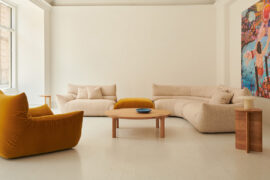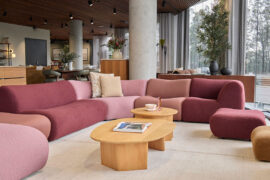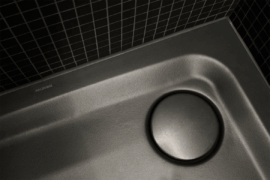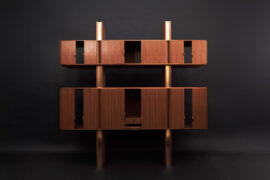Flooring company Bolon has taken the next environmentally conscious step forward with Bolon Green.
Since originally founding in 1949, Bolon has again and again shown itself to be an environmentally forward thinking design innovator. From an early history or turning textile waste into rag rugs, the group has continuously looked for more sustainable working and manufacturing processes up to this day. Bolon Green is the next step in that story
With environmentally conscious design becoming more and more important in the face of an ever-changing world, Bolon Green serves as a holistic approach to environmental responsibilities. The ultimate aim with Bolon Green is to offer a product that is completely adapted to the built and natural environments, and is the result of a carbon climate neutral design, with design responsibilities extending beyond the actual manufacturing process to ultimately leave no environmental footprint.
The seven areas covered by a future without environmental footprints are examples of product and design innovation at their best:
Bolon Green sees all Bolon products made 100% phthalate free, ensuring surfaces safe for contact with food and children. This new process also allows Bolon to employ lower temperatures during the production process of the surfaces, contributing to overall reduced energy consumption.
All Bolon collections are designed with the world’s most demanding environmental certifications in mind. Covering products and processes, Bolon hold many internationally recognised environmental qualifications – allowing Bolon to be featured in the highest level Green Star rated projects across Australia. Bolon is available in Australia through The Andrews Group.
INDESIGN is on instagram
Follow @indesignlive
A searchable and comprehensive guide for specifying leading products and their suppliers
Keep up to date with the latest and greatest from our industry BFF's!

London-based design duo Raw Edges have joined forces with Established & Sons and Tongue & Groove to introduce Wall to Wall – a hand-stained, “living collection” that transforms parquet flooring into a canvas of colour, pattern, and possibility.

A curated exhibition in Frederiksstaden captures the spirit of Australian design

The 2023 NSW AIA Awards acknowledged a broad spectrum of innovative projects, with the restoration of the iconic Sydney Opera House taking centre stage.

It’s almost here… Next week is Milan Design Week! Keep your finger on the pulse with this selection of must-see installations at the Fuorisalone.
The internet never sleeps! Here's the stuff you might have missed

Poised at the intersection of design and service, King Trade has launched a new dedicated hub in Bondi Junction, which offers tailored product, service and pricing for architects and interior designers.

Sydney Open invites the public to explore over 55 buildings, spaces and new additions to the skyline, with a newly released Talks & Tours program offering direct access to the architects behind Bundarra and Pier Pavilion.

Overlooking Berlin Zoo, the suites of the 25hours Hotel Bikini Berlin curate the sustainability ethos in an entirely unique and dynamic aesthetic. Think natural fabrics and materials, jewel-hued colours, curves and cushions, spa-like bathrooms and hammocks with views over urban greenery.

Adam Markowitz Design, in collaboration with Simeon Dux, has been awarded The Object at the INDE.Awards 2025. Their winning project, A Cabinet of Curiosities, is a masterwork of craftsmanship and adaptability; a poetic response to shifting domestic and professional life in the post-COVID era.